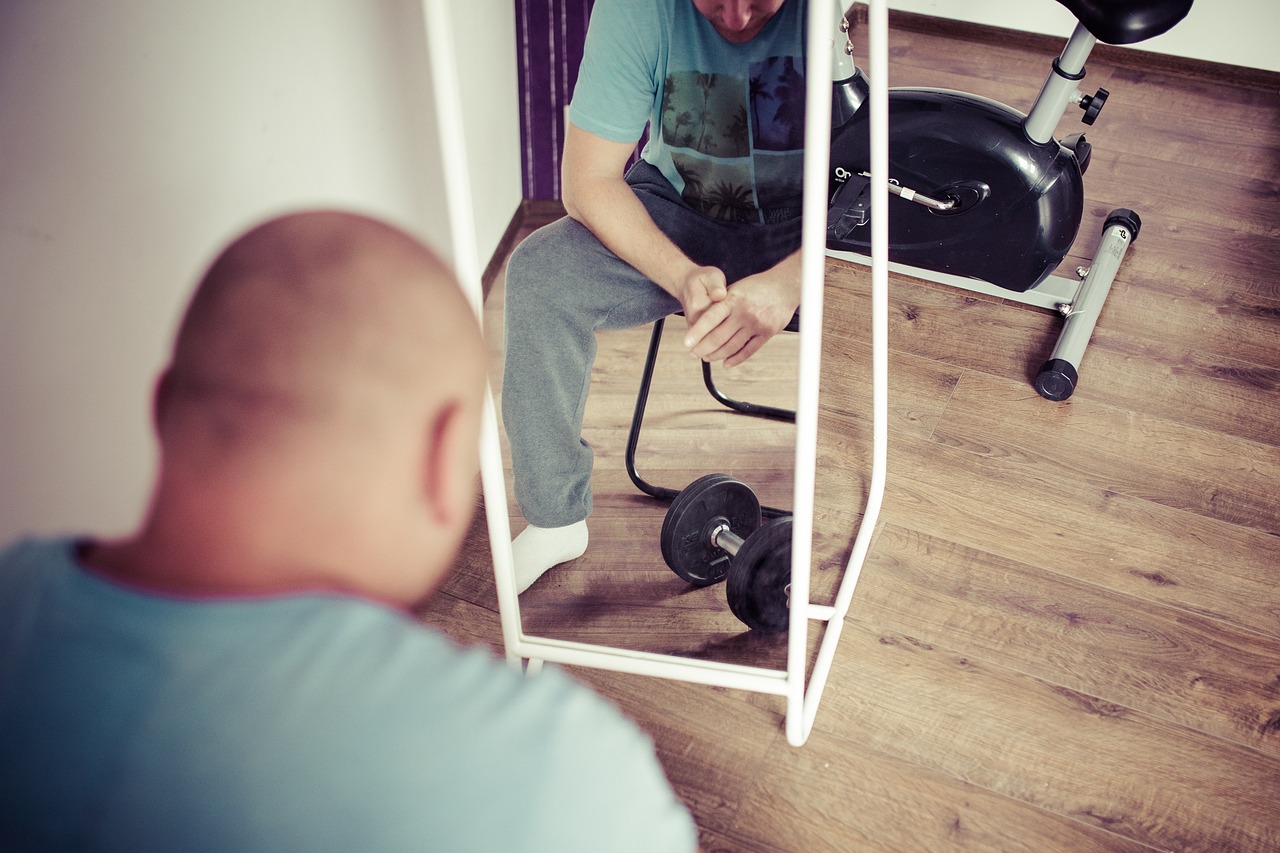
If you’ve ever set foot in a gym, chances are you’ve set your sights on increasing your bench press, squat, and deadlift numbers. After all, there’s something undeniably empowering about being able to lift more weight and push yourself to new heights. But how exactly can you achieve these lofty goals? In this article, we’ll explore some effective strategies and techniques that can help you boost your strength and maximize your gains in these three key lifts. So get ready to take your lifting game to the next level and unleash your full potential!
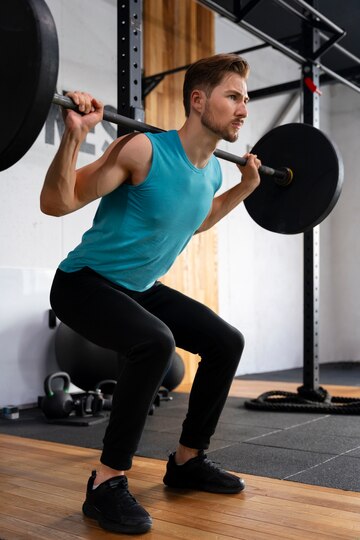
This image is property of pixabay.com.
Technique and Form
Ensure Proper Execution
When it comes to strength training, one of the most important factors that contributes to progress and injury prevention is proper technique and form. Whether you’re performing a bench press, squat, or deadlift, it is crucial to execute each movement correctly. This means maintaining proper body positioning, engaging the correct muscles, and executing a smooth and controlled motion. Take the time to learn and understand the correct form for each exercise, and make sure to consistently practice and refine your technique.
Maintain a Neutral Spine
One key aspect of proper form is maintaining a neutral spine throughout your lifts. This means keeping your spine in a natural, straight alignment without excessive rounding or arching. Maintaining a neutral spine helps to distribute the load evenly and reduce the risk of injury. Practice engaging your core and keeping your back flat throughout your bench press, squat, and deadlift exercises.
Activate the Proper Muscles
Another important aspect of proper technique is activating the correct muscles for each exercise. This ensures that you are targeting the intended muscle groups and maximizing the effectiveness of your training. For example, during a bench press, focus on contracting your chest muscles as you push the weight up, rather than relying solely on your arms. Similarly, during a squat, engage your glutes and hamstrings to drive the movement, rather than relying on your quadriceps alone. By activating the proper muscles, you can increase your overall strength and performance.
Use a Full Range of Motion
To maximize the benefits of your bench press, squat, and deadlift exercises, it is essential to utilize a full range of motion. This means lowering the weight until your muscles are stretched and then extending them fully during the lifting phase. By performing a full range of motion, you engage a larger number of muscle fibers and promote greater muscle activation. Additionally, this can help improve flexibility and joint mobility over time.
Avoid Jerking Movements
While it may be tempting to use momentum or jerk the weights during your lifts, this can lead to poor form and an increased risk of injury. Jerking movements not only compromise your technique but also reduce the effectiveness of the exercise. Focus on executing smooth and controlled movements, maintaining proper form throughout the entire range of motion. This will allow you to target and engage the desired muscles more effectively, leading to greater strength gains.
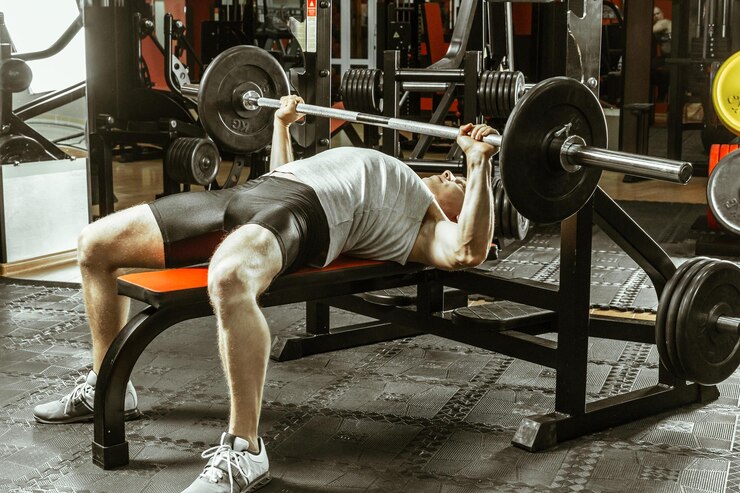
Progressive Overload
Gradually Increase Weight
One of the foundational principles of strength training is progressive overload. This means gradually increasing the resistance or weight you lift over time to continue challenging your muscles and promoting muscle growth. To increase your bench press, squat, and deadlift, aim to progressively add weight to each exercise as you become stronger. Start with a weight that you can comfortably lift with proper form, and then gradually increase the load as you adapt and progress.
Implement Resistance Bands
Resistance bands are a versatile and effective tool for increasing the difficulty of your bench press, squat, and deadlift exercises. By attaching them to the barbell or using them as assistance during bodyweight exercises, you can add resistance throughout the entire range of motion. Resistance bands provide a variable resistance, making the exercise more challenging at the peak of the movement. This can help you build strength and overcome plateau phases in your training.
Utilize Chains
Chains are another fantastic tool to incorporate into your strength training routine. By attaching chains to the barbell, you can progressively increase the load as you lift. As the chains leave the floor during the bench press, squat, or deadlift, the weight becomes heavier, forcing you to exert more effort. This added challenge stimulates your muscles to adapt and grow stronger. Additionally, using chains adds an element of instability to the exercise, further engaging your stabilizing muscles.
Incorporate Dumbbells
While barbells are a staple in strength training, don’t overlook the benefits of incorporating dumbbells into your bench press, squat, and deadlift workouts. Dumbbells offer a greater range of motion, allowing for increased muscle activation and targeted strength development. By using dumbbells, you can also address any muscular imbalances that may exist, as each limb works independently. Consider incorporating dumbbell variations of these exercises to add variety and challenge to your training routine.
Experiment with Different Equipment
In addition to barbells and dumbbells, there is a wide range of equipment available that can help you increase your bench press, squat, and deadlift. From kettlebells and resistance machines to suspension trainers and bodyweight exercises, don’t be afraid to experiment with different equipment. Each type of equipment offers unique challenges and benefits, and incorporating variety into your workouts can keep your training exciting and promote overall strength gains.
Proper Warm-Up and Stretching
Perform Dynamic Warm-Up Exercises
Before diving into your bench press, squat, and deadlift workouts, it is crucial to adequately warm up your body. Performing dynamic warm-up exercises helps to increase blood flow, raise body temperature, and prepare your muscles and joints for the upcoming movements. Examples of dynamic warm-up exercises include jumping jacks, bodyweight squats, arm circles, and lunges. Aim to perform these movements for about 5-10 minutes before starting your actual strength training session.
Engage in Foam Rolling
Foam rolling, also known as self-myofascial release, is a technique that involves using a foam roller to apply pressure to specific muscles to release tension and tightness. By incorporating foam rolling into your warm-up routine, you can improve muscle flexibility, increase range of motion, and reduce the risk of injury. Focus on targeting the muscles involved in your bench press, squat, and deadlift exercises, such as the quadriceps, hamstrings, glutes, and upper back.
Focus on Mobility Drills
Mobility drills are exercises designed to improve joint mobility and flexibility, allowing for a greater range of motion during your strength training movements. Incorporate mobility exercises that target the shoulders, hips, and ankles, as these areas play a crucial role in proper form and execution. For example, shoulder dislocations with a resistance band can help improve shoulder flexibility for the bench press, while hip mobility drills like squats with a focus on depth can enhance your squat performance.
Stretch the Targeted Muscles
Static stretching is another essential component of your warm-up routine before bench press, squat, and deadlift workouts. After completing dynamic warm-up exercises, spend some time stretching the specific muscles involved in each exercise. This includes stretches for the chest, quadriceps, hamstrings, glutes, and hip flexors. Hold each stretch for about 20-30 seconds, ensuring that you feel a gentle stretch without pain or discomfort.
Include Activation Exercises
Activation exercises are movements that specifically target and activate the muscles that will be heavily engaged during your bench press, squat, and deadlift workouts. These exercises help to “switch on” the targeted muscles before the main lifts, promoting greater muscle recruitment and overall performance. Examples of activation exercises include glute bridges, band pull-aparts for the upper back, and hip abduction exercises for the glutes. Perform a few sets of activation exercises to ensure that your targeted muscles are primed and ready for action.
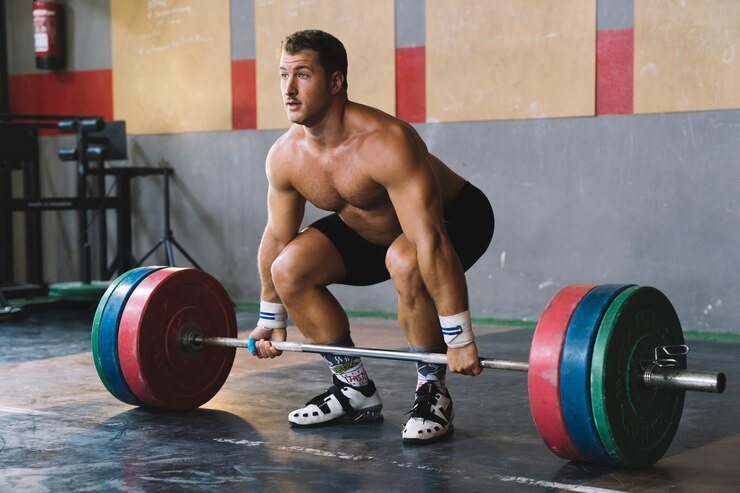
Periodization
Divide Training into Phases
Periodization is a training approach that involves dividing your training into distinct phases or cycles to optimize your progress and prevent plateaus. By strategically varying training variables such as intensity, volume, and exercises, you can continuously challenge your body and facilitate continuous improvement. Divide your training into phases such as hypertrophy (muscle-building), strength, and power phases, each with specific goals and training protocols.
Alternate Intensity and Volume
Within each training phase, it is essential to alternate between training at high intensity and high volume. High-intensity training focuses on heavier weights and lower repetitions, challenging your muscles to lift near-maximal loads. High-volume training, on the other hand, involves lifting moderate weights for a higher number of repetitions, emphasizing muscle endurance and hypertrophy. By alternating between these two types of training, you can stimulate different muscle fibers and promote well-rounded strength gains.
Follow a Specific Program
To optimize your periodization and progress efficiently, consider following a specific strength training program. A program developed by a qualified strength and conditioning coach or personal trainer takes the guesswork out of your training and ensures a well-structured and systematic approach. Look for programs that align with your goals and experience level, and be consistent in following the prescribed exercises, sets, and repetitions.
Implement Rest and Recovery
Rest and recovery are just as important as your training sessions when it comes to increasing your bench press, squat, and deadlift. Allowing adequate time for rest between workouts ensures that your muscles have enough time to repair and grow stronger. The amount of rest needed varies between individuals, but aim for at least 48 hours of rest between sessions targeting the same muscle groups. Additionally, incorporating active recovery activities such as light stretching, low-impact cardio, or yoga can help enhance overall recovery and prevent overtraining.
Adjust Workouts as Needed
As you progress in your strength training journey, you may need to adjust your workouts to continue seeing improvements. This can involve modifying the number of sets and repetitions, increasing weight, or changing exercise variations. Pay attention to how your body responds to the training stimulus and be open to making adjustments when necessary. Continuously challenge yourself without pushing beyond your limits, as this can lead to overtraining or injuries.
This image is property of pixabay.com.
Accessory Movements
Include Assistance Exercises
Accessory movements refer to exercises that target specific muscle groups and assist in building strength for your bench press, squat, and deadlift. These exercises complement your main lifts and help to address any muscle imbalances or weaknesses. For example, tricep dips and push-ups can assist in improving the bench press, while lunges and step-ups can enhance your squat and deadlift. Include a variety of accessory exercises in your training routine to target different muscle groups and improve overall stability and strength.
Target Specific Weak Points
Identifying and targeting specific weak points in your bench press, squat, and deadlift can significantly improve your overall performance and help you overcome sticking points. Weak points can be related to specific muscles or technical aspects of the lift. For instance, if you struggle with lockout strength in the bench press, incorporating exercises such as close-grip bench presses and tricep extensions can help strengthen your triceps, which play a crucial role in the lockout phase.
Work on Stabilizing Muscles
Stabilizing muscles are often overlooked but play a vital role in maintaining proper form and executing a strong bench press, squat, and deadlift. Incorporate exercises that target these muscles, such as planks, side planks, and bird dogs, to enhance stability and control throughout your lifts. Strong stabilizing muscles contribute to overall strength and can help prevent injuries by ensuring proper alignment and joint stability.
Incorporate Single-Leg Exercises
Single-leg exercises, also known as unilateral exercises, are excellent for addressing muscular imbalances and improving overall functional strength. Including exercises like single-leg squats, lunges, and step-ups can help target specific areas that may be weaker or less coordinated during bilateral exercises. Single-leg work also requires greater stability, proprioception, and core engagement, making it a valuable addition to your bench press, squat, and deadlift training regimen.
Focus on Muscular Imbalances
Muscular imbalances can hinder your progress and increase the risk of injury. Take the time to assess your own body and identify any asymmetries or weaknesses that may impact your bench press, squat, and deadlift. By focusing on these imbalances and incorporating exercises that target the weaker side or muscle group, you can work towards achieving better symmetry and overall strength. Consult with a qualified professional if you need guidance in assessing and addressing your muscular imbalances effectively.
Nutrition and Hydration
Consume Sufficient Protein
Proper nutrition is crucial for optimal strength and muscle growth. To support your bench press, squat, and deadlift training, ensure that you are consuming sufficient protein. Protein is essential for muscle repair and growth, and consuming enough can aid in recovering from intense training sessions. Aim to include high-quality protein sources such as lean meats, poultry, fish, eggs, dairy products, and plant-based protein sources in your diet. The recommended daily protein intake for strength training individuals is approximately 0.7 to 1 gram of protein per pound of body weight.
Meet Caloric Needs
In addition to protein, meeting your caloric needs is important for supporting strength and muscle gains. To increase your bench press, squat, and deadlift, you need to provide your body with enough energy to fuel your workouts and support recovery. Calculate your total daily energy expenditure (TDEE) and ensure that you are consuming enough calories to meet your training demands. Aim for a well-balanced diet that includes carbohydrates, fats, and protein in appropriate proportions.
Stay Hydrated
Hydration is often overlooked but plays a significant role in strength training performance. Dehydration can lead to fatigue, muscle cramps, and impaired cognitive function, all of which can hinder your bench press, squat, and deadlift workouts. Make sure to drink enough water throughout the day and especially during your training sessions. The exact amount of water needed varies depending on factors such as body size, activity level, and climate, but a general guideline is to aim for at least 8 cups (64 ounces) of water per day.
Emphasize Nutrient Timing
The timing of your meals and snacks can impact your training performance and recovery. Prioritize consuming a meal or snack containing carbohydrates and protein within the post-workout window, ideally within 30-60 minutes after your bench press, squat, and deadlift sessions. This helps replenish glycogen stores, initiate muscle repair and growth, and support recovery. Additionally, spreading your protein intake evenly throughout the day can optimize muscle protein synthesis and facilitate muscle growth.
Consider Muscle-Building Supplements
While not essential, certain supplements can complement your nutrition and support your bench press, squat, and deadlift goals. Whey protein powders, for example, can provide a convenient and fast-digesting protein source to help meet your daily protein needs. Creatine monohydrate supplementation has also been shown to increase strength and muscle mass over time. However, it is essential to remember that supplements should not replace a well-balanced diet but rather act as additional support if recommended by a healthcare professional.
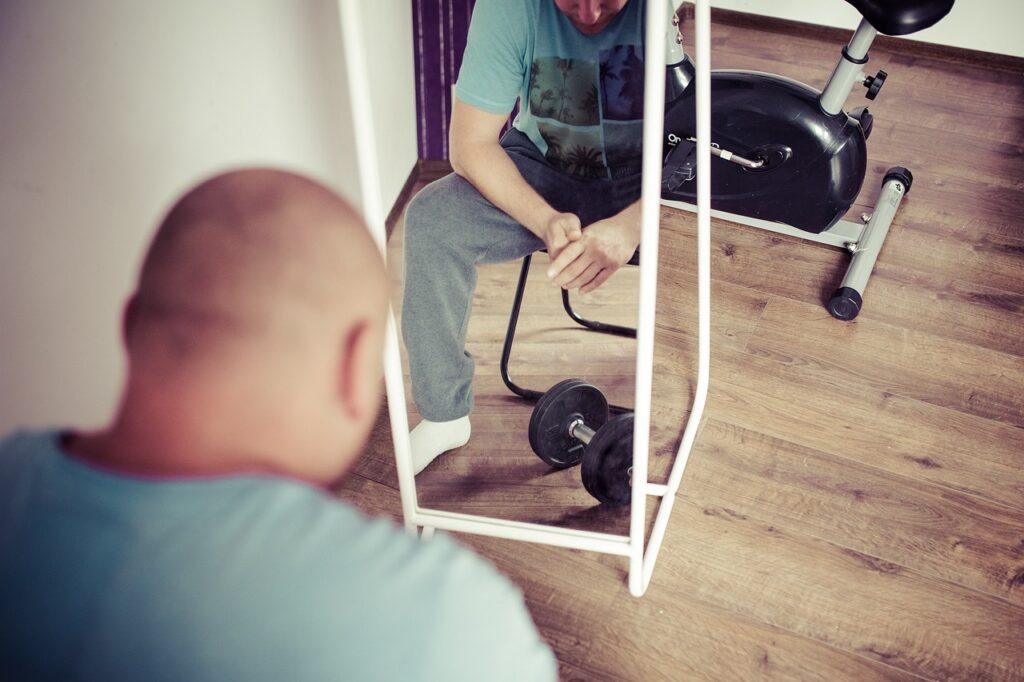
This image is property of pixabay.com.
Rest and Recovery
Prioritize Sleep
Sleep is often referred to as the “secret weapon” for optimal performance and recovery. During sleep, your body repairs and rebuilds tissues, releases growth hormone, and restores energy levels. Aim for 7-9 hours of quality sleep each night to support your bench press, squat, and deadlift training. Establish a consistent sleep schedule, create a relaxing bedtime routine, and optimize your sleep environment by ensuring it is dark, cool, and quiet.
Allow for Rest Days
Rest days are just as important as training days when it comes to increasing your bench press, squat, and deadlift. Giving your body time to rest and recover is essential for muscle repair and growth. Plan your training schedule to include one or two rest days per week, where you engage in light physical activity or focus on recovery techniques such as stretching, foam rolling, or yoga. This allows your muscles and central nervous system to rejuvenate and prepare for the next training session.
Manage Stress Levels
Stress, whether from exercise or other life factors, can impact your strength training progress. Excessive stress can lead to increased cortisol levels, impaired recovery, and decreased performance. Find healthy ways to manage and reduce stress, such as practicing mindfulness, engaging in relaxation techniques, and participating in activities that bring you joy. By managing your stress levels, you can optimize your bench press, squat, and deadlift training outcomes.
Incorporate Recovery Techniques
In addition to rest days, incorporating specific recovery techniques into your routine can enhance overall recovery and improve your bench press, squat, and deadlift performance. Some effective recovery techniques include foam rolling, contrast showers (alternating hot and cold water), massage therapy, and active recovery exercises such as light swimming or cycling. Experiment with different recovery techniques and find what works best for your body.
Listen to Your Body
Perhaps one of the most crucial aspects of rest and recovery is listening to your body’s signals. Everyone’s recovery needs and abilities are unique, so it’s important to pay attention to how you feel physically and mentally. If you’re feeling excessively fatigued, experiencing persistent muscle soreness, or noticing a decline in performance, it may be a sign that you need to take a step back, rest, or modify your training program. Trusting your body’s feedback and giving yourself permission to rest when needed is essential for long-term progress and injury prevention.
Mental Preparation
Set Clear Goals
Having clear goals is essential for staying motivated and focused during your bench press, squat, and deadlift training. Determine what you want to achieve and set specific, measurable, attainable, relevant, and time-bound (SMART) goals. Whether it’s increasing your one-rep max, improving your form, or working towards a competitive event, having a clear vision of what you want to achieve keeps you on track and provides a sense of purpose and direction.
Visualize Success
Visualization is a powerful tool that can enhance your performance and confidence. Take the time to visualize yourself successfully executing your bench press, squat, and deadlift with perfect form, lifting the weight effortlessly, and achieving your goals. Visualize each step of the movement, from the set-up to the completion, in vivid detail. This mental rehearsal primes your mind and body for success and can help reduce anxiety and build confidence in your abilities.
Practice Mindfulness
Mindfulness is the practice of being fully present and engaged in the present moment, without judgment. Engaging in mindfulness techniques, such as deep breathing exercises or meditation, can help calm your mind and improve focus during your bench press, squat, and deadlift workouts. Incorporate mindfulness practices before and during your training sessions to enhance your mind-body connection, reduce distractions, and increase overall mental clarity.
Stay Focused and Determined
During your bench press, squat, and deadlift workouts, it’s important to stay focused on the task at hand. Minimize distractions and channel your attention into each repetition, ensuring that you are executing proper form and technique. Develop mental cues that remind you of key aspects of your lifts, such as “chest up” or “drive through the heels.” Cultivate a mindset of determination and perseverance, knowing that each repetition brings you one step closer to your goals.
Cultivate a Positive Mindset
A positive mindset can make a significant difference in your bench press, squat, and deadlift performance. Replace negative self-talk or self-doubt with positive affirmations and confidence-building statements. Focus on your strengths and past achievements, and use them as sources of motivation and inspiration. Surround yourself with a positive support network, whether it’s training partners, coaches, or friends who believe in your abilities and provide encouragement along the way.
Seek Professional Guidance
Work with a Qualified Trainer
If you’re new to strength training or looking to improve your bench press, squat, and deadlift technique, working with a qualified trainer can be highly beneficial. A knowledgeable trainer can assess your current abilities, create a customized training program, and provide guidance on proper form and technique. They can also offer motivation, accountability, and ensure that you are progressing safely and effectively toward your goals.
Schedule Regular Form Checks
Even if you have been strength training for some time, it’s always helpful to schedule regular form checks with a qualified trainer or coach. This allows them to observe your technique, provide feedback, and identify any areas that may require improvement or adjustments. Form checks can help prevent bad habits from developing, optimize your performance, and minimize the risk of injury.
Receive Personalized Programming
Every individual is unique, and what works for one person may not work as effectively for another. Consider working with a qualified professional who can provide personalized programming specific to your goals, abilities, and any limitations you may have. Personalized programming takes into account your current strength levels, progression rates, and individual needs, maximizing the effectiveness of your bench press, squat, and deadlift training.
Attend Strength Training Classes
Attending strength training classes can be a great way to challenge yourself, learn new techniques, and stay motivated. Classes often provide a supportive and energizing environment, allowing you to train alongside like-minded individuals. Look for classes that focus on compound exercises like the bench press, squat, and deadlift, as they provide excellent opportunities for technique refinement and strength development.
Consider Powerlifting Coaching
If you are interested in taking your bench press, squat, and deadlift to the next level or competing in powerlifting, consider working with a powerlifting coach. Powerlifting coaches specialize in the specific techniques, programming, and nuances of the bench press, squat, and deadlift. They can provide expert guidance, competition preparation, and help you reach your full potential in these lifts.
Avoid Common Mistakes
Don’t Neglect Warm-Up Sets
Warm-up sets are an essential component of your bench press, squat, and deadlift workouts. They help to increase blood flow, lubricate the joints, and prepare your muscles and nervous system for the heavier working sets. Start with lighter weights and gradually increase the load, performing a few sets of low-intensity repetitions before moving on to your working sets. Neglecting warm-up sets can lead to suboptimal performance and an increased risk of injury.
Avoid Overtraining
While consistency is crucial for progress, it’s equally important to avoid overtraining. Overtraining occurs when you don’t allow your body enough time to recover between workouts, leading to a decline in performance, fatigue, and an increased risk of injury. Be mindful of the signs of overtraining, such as persistent fatigue, decreased motivation, and a decrease in strength and performance. Incorporate rest days, adequate sleep and nutrition, and listen to your body’s signals to prevent overtraining.
Don’t Rely Solely on Machines
While machines can be useful tools for certain exercises, don’t rely solely on them for your bench press, squat, and deadlift training. Free weight exercises (using barbells, dumbbells, or bodyweight) require more muscle activation, engage stabilizing muscles, and promote more natural movement patterns. Machines can provide assistance or isolation, but incorporating free weight exercises into your routine is essential for building functional strength and maximizing overall performance.
Steer Clear of Ego Lifting
Ego lifting refers to attempting to lift heavier weights than you can handle with proper form and execution. While it may be tempting to lift as much weight as possible to impress others or satisfy your ego, it’s important to prioritize safety and proper technique. Lifting with improper form increases the risk of injury and compromises the effectiveness of the exercise. Focus on lifting weights that challenge you within your capabilities and gradually progress over time.
Don’t Skip Mobility and Flexibility Work
Mobility and flexibility work should not be neglected in your bench press, squat, and deadlift training. Poor mobility and flexibility can restrict your range of motion, compromising your technique and performance. Incorporate dynamic warm-up exercises, mobility drills, and static stretching into your routine to address any mobility restrictions and improve overall movement quality. Building a foundation of mobility and flexibility will benefit your strength training in the long run.
In conclusion, increasing your bench press, squat, and deadlift requires a comprehensive approach that encompasses proper technique and form, progressive overload, warm-up and stretching, periodization, accessory movements, nutrition and hydration, rest and recovery, mental preparation, seeking professional guidance, and avoiding common mistakes. By following these guidelines and being consistent and patient in your training, you can work towards achieving your strength goals and unlocking your full potential. Remember to always prioritize safety, listen to your body, and enjoy the journey of continual growth and improvement. Happy lifting!


